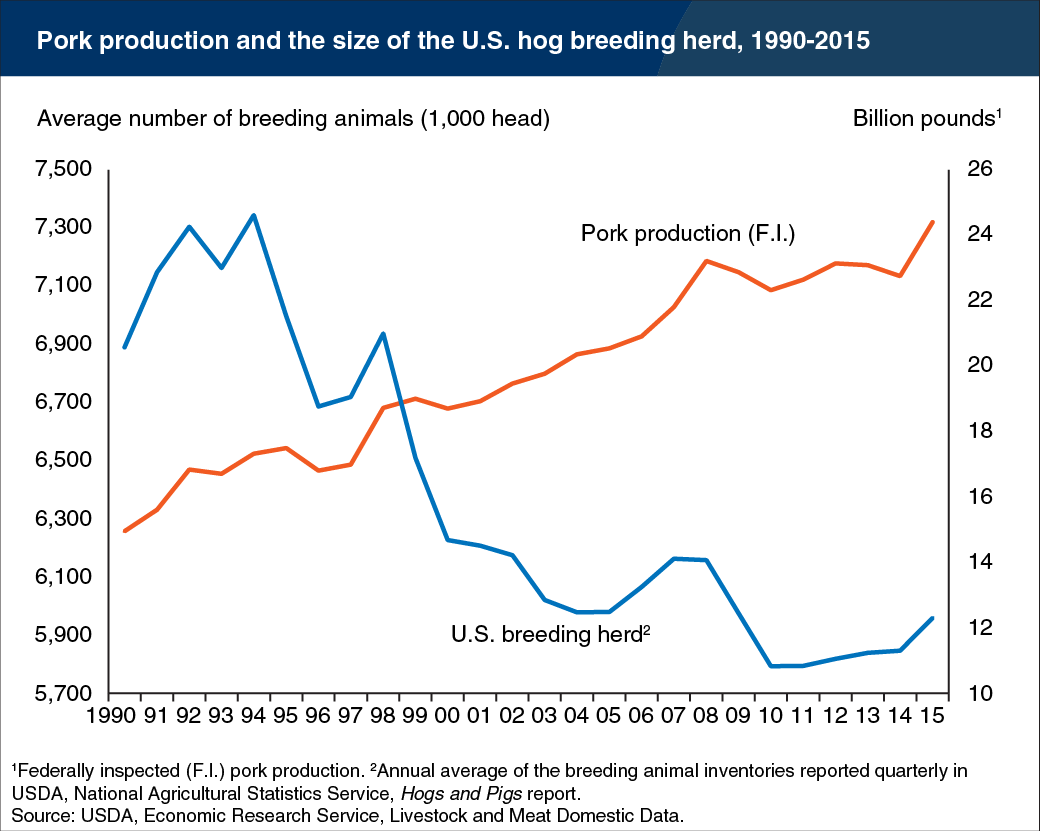More pork produced with fewer breeding animals, as sow productivity increases
- by Mildred Haley
- 1/28/2016

U.S. annual pork production has grown by more than 63 percent since 1990, and in 2015 it reached an all-time record of more than 24.3 billion pounds. Over the same period, the size of the U.S. hog breeding herd declined by more than 13 percent, reflecting strong productivity increases in hog production. Technical innovation in breeding and genetic research has yielded larger numbers of piglets per sow: U.S. average litter rates grew from fewer than 8 pigs per litter in 1990 to more than 10 today. At the same time, improvements in nutrition and barn management practices, together with heavier slaughter weights, have allowed the hog industry to reduce the size of its breeding herd while expanding production of pork. This chart is based on the ERS Livestock & Meat Domestic Data and the January 2016 Livestock, Dairy, and Poultry Outlook report.

